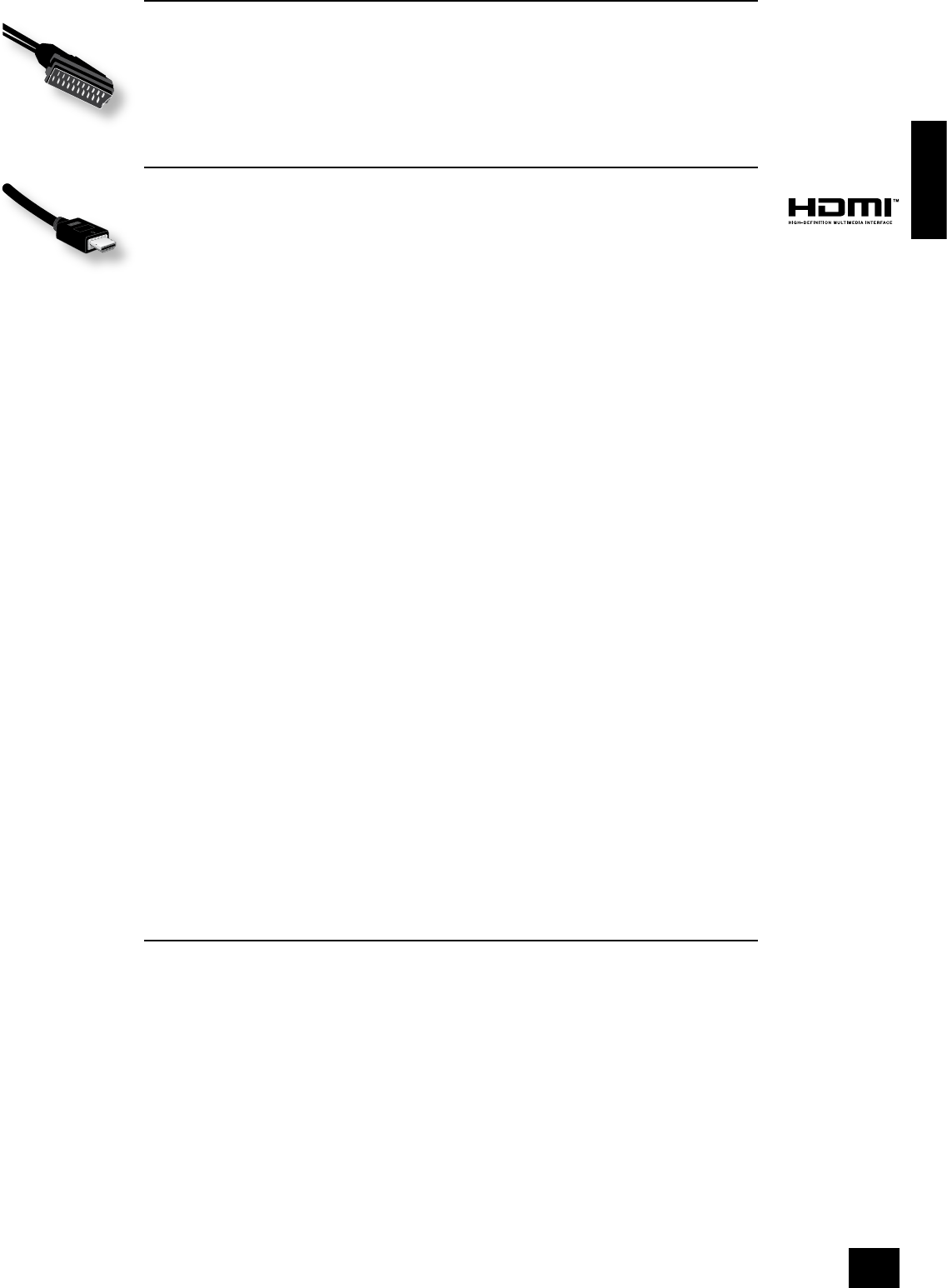
English
DV137
E-5
SCART output
The SCART connector is common on European A/V equipment and provides a convenient connection
method between your DVD player and display device, carrying both video and stereo audio.
If you are using a SCART connection and you do not wish to listen to the audio through your TV, then it
is best to mute your TV’s speakers; muting the TV will prevent this audio being heard.
Note that the SCART output has a control signal that switches your TV to its SCART
input when the DV137 is turned on. It will also signal to wide-screen TVs the correct
aspect ratio (16:9 or 4:3), provided this feature is supported by the TV.
HDMI digital video
The HDMI connector offers uncompressed digital video and audio transmission between the
DV137 and the display device, and provides the highest quality output. Generally, it is also the
easiest connection type to congure.
To use this video connection, you will require a HDMI or HDMI/DVI cable between the DV137 and your
display device or receiver. See page 22 for further details.
Making audio connections
The DV137 offers a number of alternatives for connecting audio. The connection type to use depends on
the rest of your system; chose the type most appropriate to your amplier.
If you want to listen to audio through... ...we recommend the following:
<
Your television
How you listen to audio through your TV depends on the inputs it has and
your video connection:
<
SCART: If you are using a SCART connection, this will carry stereo
audio. No further connection is required.
<
HDMI: If you are using an HDMI connection (not DVI), this will carry
audio. No further connection is required.
<
Stereo phono: (For use with a connection type other than SCART or
HDMI.) If your TV has stereo phono inputs, follow the instructions
below for a stereo amplier.
<
Your stereo amplier
If you wish to listen to audio from your player through a stereo amplier, then
use the stereo analogue outputs. These outputs provide a stereo down-mix of the
source material.
Using a stereo phono cable of a suitable length, connect the outputs labeled
L/R STEREO OUT to the left and right inputs (respectively) for DVD or CD on your
amplier.
<
Your multi-channel amplier
Using phono cables of a suitable length, connect the multi-channel analogue
outputs of your DVD player to the multi-channel input of your amplier (labelled
something like ‘DVDA’, ‘SACD’ or ‘5.1 IN’). Ensure that each channel is connected
as labelled (so that the left-channel output from the DVD player is connected to
the left-channel input on the ampler).
If you are using three stereo ampliers to provide the amplication, we
recommend grouping related channels within an amplier: use one amplier for
the left and right channels, one for the two surround channels and one for the
centre channel and (if necessary) the subwoofer.
<
Your surround-sound receiver
Connect either the HDMI or one of the S/PDIF digital outputs to the ‘DVD’ input
of your receiver. These digital outputs provide PCM, Dolby Digital, DTS or MPEG
multi-channel audio, depending on the source material.
Listening to DVD-audio or SACD discs
The high quality of DVD-audio and SACD discs can be realised only by using either the multi-channel
analogue or the HDMI outputs. Using a conventional digital connection between your DVD player and
surround-sound receiver will not allow you to hear these discs at their best, since the audio carried
across the digital link when these discs are played is compromised (i.e. limited to a sample rate of 48K).
This is true for all DVD players and is not a limitation of your DV137.
If you wish to use a surround-sound receiver for decoding your movie sound-track, but want also to
enjoy DVDA/SACD, we recommend either following the connection advice given above for ‘multi-channel
amplier’ in addition to using the digital audio connection, or using an HDMI connection to your
receiver.


















